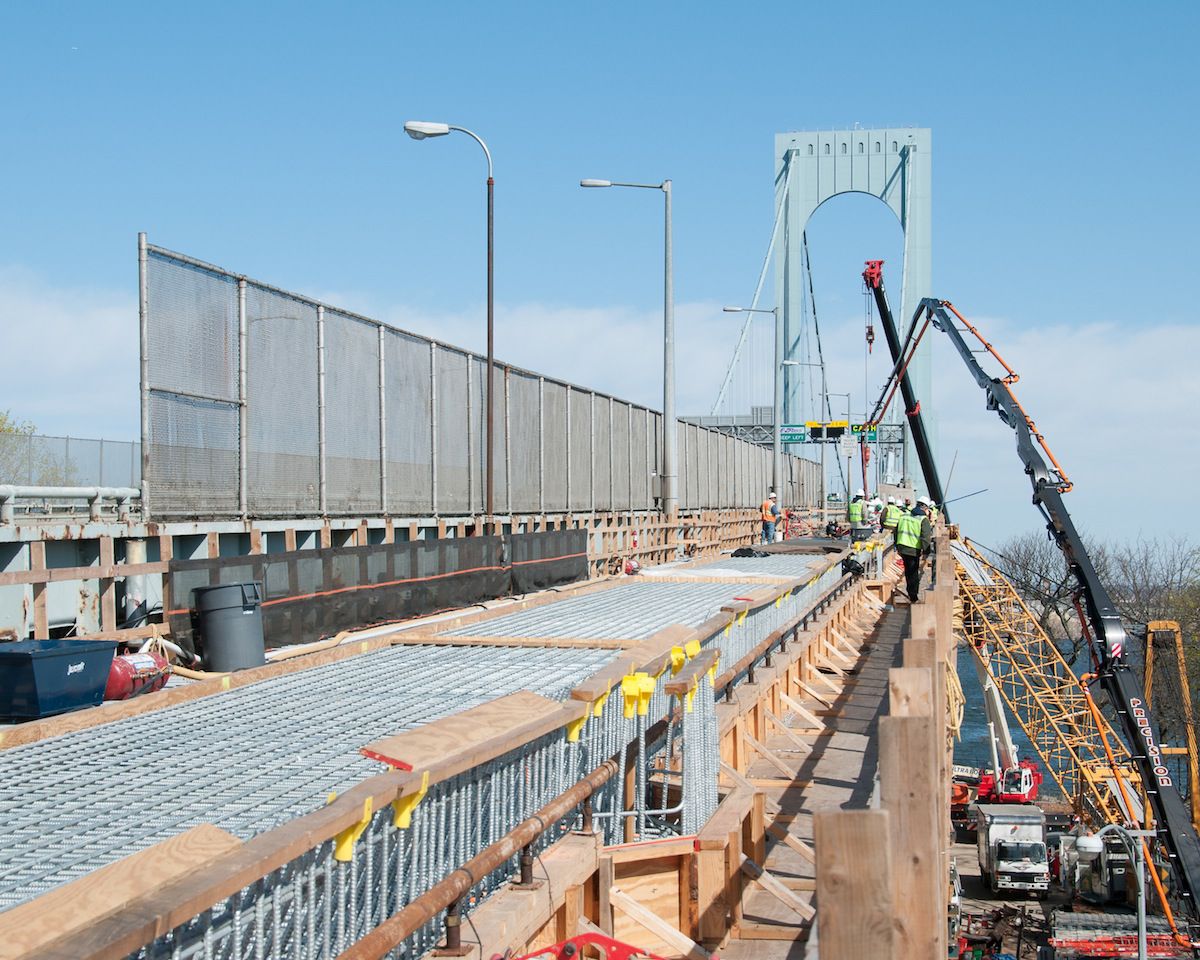Project News
E.E. Cruz Rebuilds Bronx-Whitestone Bridge Using Innovative Techniques

Work continues on schedule with the Bronx-Whitestone Bridge project. The bridge, which crosses New York City’s East River, connects Queens and the Bronx and is in the middle of a complete overhaul. E.E. Cruz and joint venture partner Tully are replacing 1,010 feet of elevated roadway. The project includes the staged removal and replacement of the existing Queens approach superstructure and substructure. Once complete, the work will support new safety shoulders and 12-foot-wide lanes.
Crews are essentially demolishing the bridge from underneath and rebuilding it from below. The final two piers that make up the concrete superstructure were poured in December 2012 and February 2013. In January, installation of the architecturally finished precast segmental T-wall blocks were completed adjacent to the east and west wing walls. Stay-in-place forms, edge of deck forms and rebar were installed for the deck in March. Concrete deck placement for the deck followed in April.
Throughout the project, the joint venture team has been well prepared to tackle the miscellaneous structural steel repairs on the existing bridge, which first opened to traffic 74 years ago. Crews have encountered deteriorated floor beams, stringers, parapets and have completed pothole repair to the existing roadway.
Crews began installing a methyl methacrylate-based seamless slurry wearing course with aggregate broadcast in 2012, which will be a marked improvement to the existing bridge deck overlay system. The protective polymer slurry overlay is applied to the existing orthotropic deck, giving the suspended span roadway an improved riding surface. The existing surface was well-worn and needed replacement.
 Also included in the contract is an innovative drainage and filtration system for water runoff, as well as the construction of a new playground. Crews installed two along with reinforced concrete pipe, manholes and catch basins. The new playground opened in May 2012 and is in full operation as the bridge rehab continues.
Also included in the contract is an innovative drainage and filtration system for water runoff, as well as the construction of a new playground. Crews installed two along with reinforced concrete pipe, manholes and catch basins. The new playground opened in May 2012 and is in full operation as the bridge rehab continues.
In late May, crews completed the first major traffic switch on the job—taking the bridge from the existing six lanes of live traffic down to five. The middle lane is reversible and can be switched depending on rush hour traffic. In June, once the temporary shoring installation is complete, demolition of the existing bridge structure began. Demolition is scheduled to last a full year, and the new bridge will be complete by December 2014.

